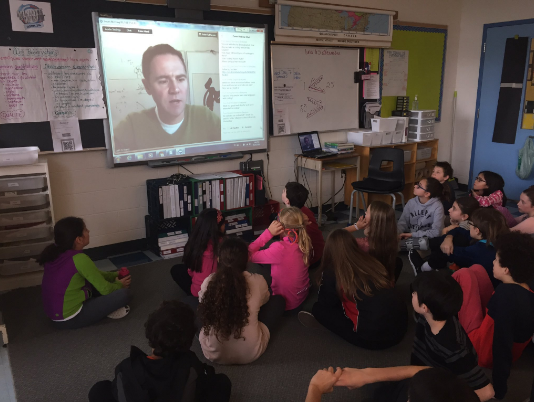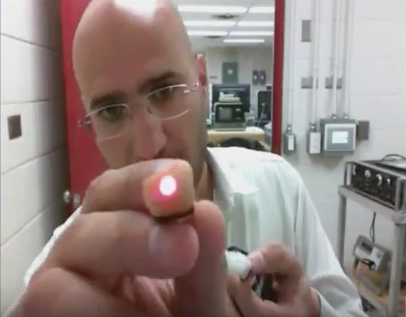Stacey Joyce, Program Manager at Partners In Research Canada (PIR)
I’m sure that you employ a variety of tools and strategies in your classroom, including inquiry activities, independent or group projects, “assessments as, for and of” learning… the list goes on. But how do you and your students answer the questions they come up with during or after the initial inquiry activity? What types of resources do you teach students to use for their independent research? How do you introduce the students to career options that use Physics?
Here’s where video calls and webinars come in, and don’t think that you can’t afford these options — they’re free from Partners In Research Canada (PIR)!
There are many options out there for connecting your class via video, but how do you find an appropriate person to connect with for a video call? Virtual Researcher On Call (VROC) is an educational program that provides you with not only free video-calling software called Zoom, but also a self-serve directory of Canadian STEM experts who can be contacted directly as well as a facilitator to contact if you need technical help or expert recommendations. Zoom installs on your personal or school board device(s) without administrator rights and there is even 24/7 telephone support available! All you need is a webcam, microphone, speakers, and internet connection. Zoom is available for PC, Mac, Linux, iOS, Android, and ChromeOS.
So how could you incorporate VROC into your teaching? VROC video connections typically last from 10 minutes to 60 minutes, depending on your goals and the expert’s availability. Here are a few ideas that have worked well for other teachers:
- Ask an expert to show you their lab/facility.
- Have a VROC expert present to your students for 5 minutes and answer questions to kick off or conclude an academic unit.
- Ask an expert to perform a demonstration that you can’t safely perform at your location.
- Have a VROC expert mentor your students through a design project.
- Connect with an expert to answer student questions and/or discuss a current topic from the news.
- During group work, pass a laptop or tablet from table to table so each group can consult separately with the VROC expert.
- Have a VROC expert give students feedback on their creations/conclusions at the end of an activity.
- Use a VROC connection to discuss career opportunities and what they’re really like.

Webinars are another great tool for broadening your students’ horizons and giving them opportunities to get answers from outside experts. Each PIR Live Event webinar features a Q&A with a different STEM researcher and/or a virtual tour of a STEM research facility. Students can submit questions for the guest expert in advance and/or ask them in real time during the webinar. There’s no need for a webcam or microphone, but you’ll need speakers.

Since webinars are not always scheduled at a convenient time for your particular class, PIR Live Event webinars are recorded and posted on the
PIR YouTube channel within 24 hours for anyone who can’t participate at the time we go live.
The schedule of upcoming webinars is available at
http://www.pirweb.org/pir/en/live-event/.
You can sign up for VROC at no cost by visiting
http://www.pirweb.org/vroc/en/sign-up/.
For more information, please visit
www.pirweb.org or send PIR and email at
vrocpc@pirweb.org.
I will be at this years’ OAPT Conference at York University May 12 and would be happy to answer your questions at the PIR table in the exhibit hall. I will also do a 30 minute presentation starting at 3:15.
Partners In Research Canada (PIR), is a registered Canadian charity headquartered in London, Ontario. PIR offers no-cost educational programs across Canada, with a focus on virtual connections between K-12 classrooms and STEM experts.
Tags: Technology, STEM, professional development
Tags: Professional Development, STEM, Technology



